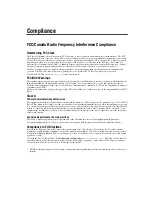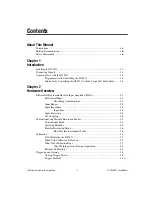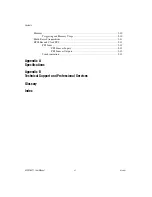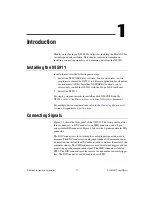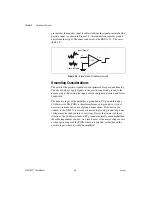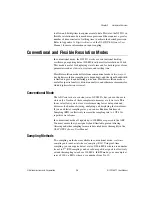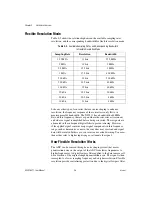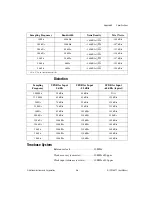
Chapter 2
Hardware Overview
2-4
ni.com
where
V
m
is the measured voltage,
V
s
is the source voltage,
R
s
is the external
source impedance, and
R
in
is the input impedance.
If the device you are measuring has a very large output impedance, your
measurements will be affected by this impedance divider. For example,
if the device has 1 M
Ω
output impedance, your measured signal is one-half
of the actual signal value.
Input Bias
The inputs of the PGIA typically draw an input bias current of 1 nA at
25
°
C. Attaching a device with a very high source impedance can cause
an offset voltage to be added to the signal measured, according to
the formula
R
s
×
1 nA, where
R
s
is the external source impedance. For
example, if the device you have attached to the NI 5911 has an output
impedance of 10 k
Ω
, typically the offset voltage is 10
µ
V (10 k
Ω
×
1 nA).
Input Protection
The NI 5911 features input-protection circuits that protect both the positive
and negative analog inputs from damage from AC and DC signals up to
±42 V.
If the voltage at one of these inputs exceeds a threshold voltage,
V
tr
, the
input clamps to
V
tr
and a resistance of 100 k
Ω
is inserted in the path to
minimize input currents to a nonharmful level.
The protection voltage,
V
tr
,
is input range dependent, as shown in Table 2-1.
AC Coupling
When you measure a small AC signal on top of a large DC component, you
can use AC coupling. AC coupling rejects any DC component in your
signal before it enters into the PGIA. Activating AC coupling inserts a
capacitor in series with the input impedance. You can select input coupling
through software.
When changing the coupling on the digitizer, the input stage takes a finite
amount of time to settle. When switching from AC to DC coupling, the
settling time is approximately 0.5 ms. When switching from DC to
AC coupling, the returned data is accurate several time constants after
switching to AC. The NI 5911 has a time constant value of 68 ms. The
equation 1 –
e
–t
/
T
, where
T
is the time constant, gives the percentage that the
original signal has settled after time
t
. Generally, six time constants is
enough time between switching to AC coupling and starting the acquisition

